Everything you need to know about brick paving slabs

Brick paving slabs are very often used to decorate different areas. Due to its versatility, it fits in parking lots, courtyards and parks.
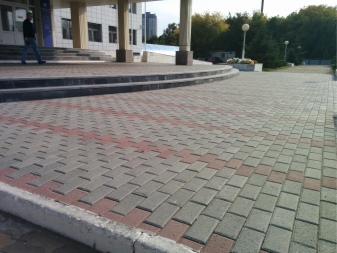
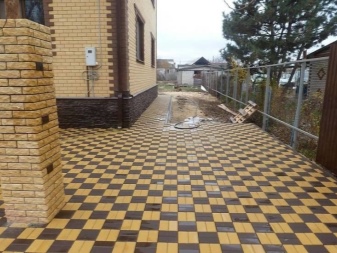
Advantages and disadvantages
During its existence, brick paving slabs have established themselves as a good building material. It has many advantages.
- Decorativeness... The material looks aesthetically pleasing. There are a wide variety of colors. They all work well together, so there are many interesting styling options available.
- Resistant to chemicals.
- Environmental friendliness... The tiles are non-toxic and are great for decorating paths and terraces next to residential buildings. In this, it is significantly superior to asphalt, which, at too hot temperatures, emits fumes that are harmful to the human body.
- Durability... The material can last for a very long time. If the technology is not violated, the coating will retain its neat appearance for many years. The tile is durable and can withstand heavy loads. It does not wear off, and minor damage does not appear on the surface of the paving stone.
- Resistant to temperature changes... The tile is excellent for use in cold regions. Even with frequent snowfalls or very low temperatures, it does not crack or deform.
- Easy to install... Using such a tile, you can not resort to the help of specialists, but to cope with the design of any site yourself.
- Reusability... This is another big plus, as the tiles can be dismantled and then laid out again. The appearance and quality of the material will not be affected by this.
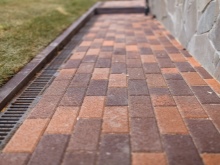

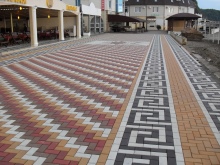
There are practically no drawbacks to this material.
But you should only buy it from trusted manufacturers. In this case, the paving slabs will meet all quality standards and will last for decades. In addition, the laying technology must not be violated.
If you make mistakes at this stage, then over time, the tile may begin to sag. In this case, holes are formed in the paths or parking lots.
Dimensions and weight
When choosing a "brick", you need to pay attention to the size of the materials. Despite the fact that outwardly this decorative tile really looks like an ordinary brick, it differs from it just in its size.
Its standard length and width are 200 x 100 millimeters. The average tile thickness is 60 mm. But in addition to materials with parameters 100x200x60 mm, there are more non-standard ones:
- 24 x 16 cm;
- 21 x 7 cm;
- 18 x 8.8 cm.
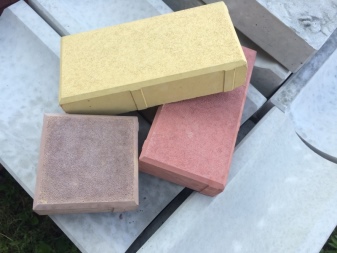
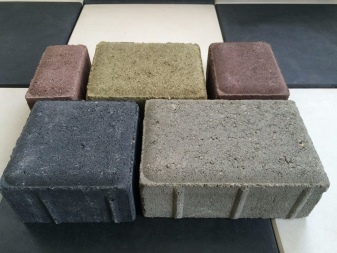
The height of the custom tiles is 7 centimeters. She weighs 3.5 kg. The weight of a standard pallet is 1710 kg. There are 12 and a half square meters of tiles in a pallet.
Tiles with dimensions 200x100x60 mm are used, as a rule, for furnishing courtyards. It is used to decorate pedestrian areas and arrivals for cars. A material measuring 200x100x80 mm is more often used for arranging urban surfaces in places where there are no special requirements for strength indicators.
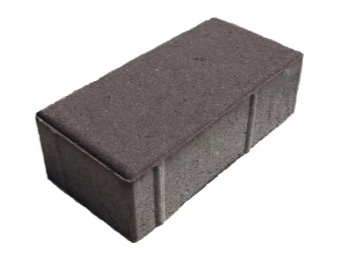
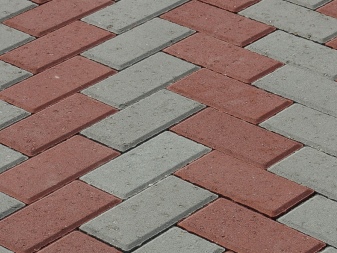
Styling options
Paving slabs "brick" excellent suitable for decoration of any areas.
It can be laid out even on winding paths, while maintaining beautiful ornaments.
For decorating gardens, parks and backyards you can use plain tiles or combine several colors.But before starting work, it is imperative to draw a diagram and calculate how many tiles of different colors will be needed. This will save you both time and money.
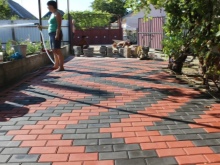
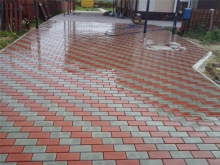
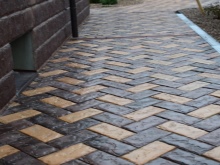
Plain
The easiest way is to lay tiles using one color. There are several layouts.
- Linear... In this case, all the bricks are laid according to the same principle, seam to seam. It turns out to be a long line. As a rule, such a scheme is used to decorate tracks.
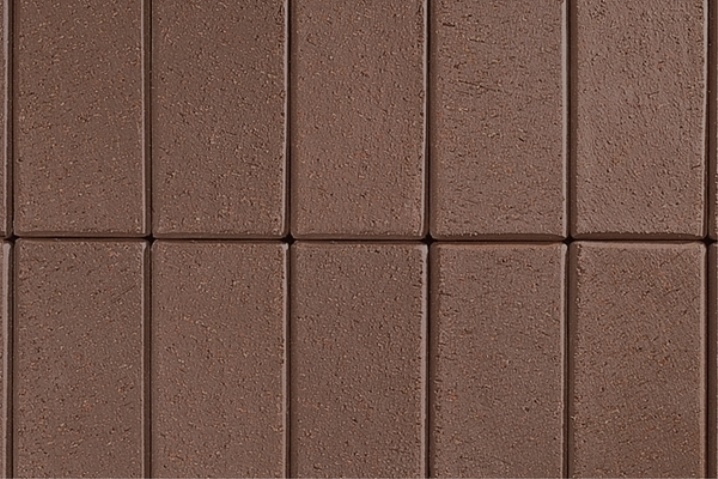
- Blocky... The peculiarity of this method of laying is that the bricks are stacked in blocks that are adjacent to each other. These blocks are located at right angles to each other. In this case, the width of such a layout can be almost any.
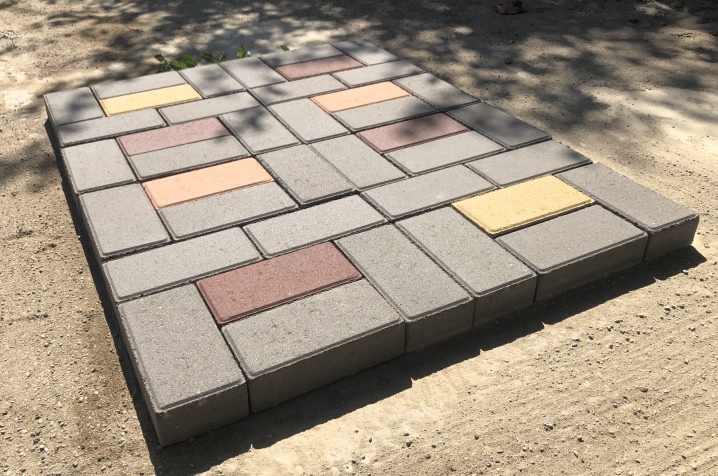
- Brick... In this case, the tiles are also laid exactly and in one direction. But each next row shifts slightly, as when laying bricks. This masonry option is great for decorating both paths and large open areas.
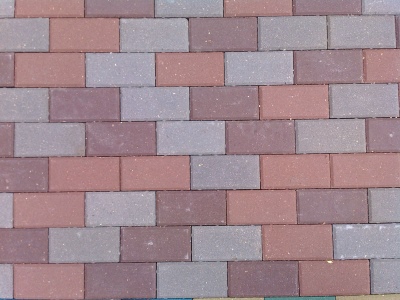
- "Herringbone"... This design is very popular. The bricks are stacked at an angle to each other. It turns out a neat beautiful masonry.
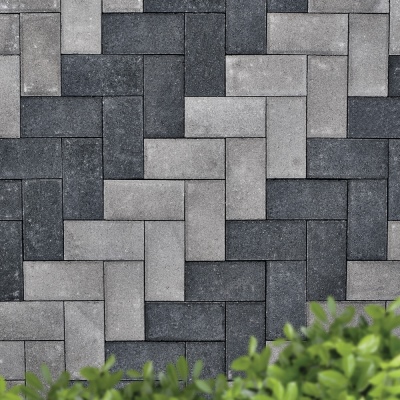
Any simple drawing from the proposed options looks stylish and looks great in gardens and yards. The most popular tile colors that are used to decorate the plots are black, gray, red.
2 or more colors
If desired and the availability of opportunities, the layout can be made in color. Usually, about two or three colors are used to create the desired pattern.
As a rule, large original patterns are created in large areas.
They can become part of landscape design. Small areas are usually decorated with a simple repeating pattern.
Often, tiles of two colors are used for arranging paths. In this case, the base of the track is laid out in one color, and the edges in another.
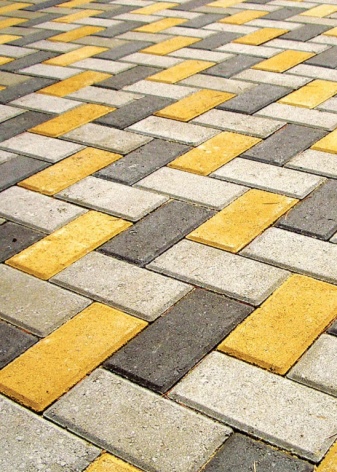
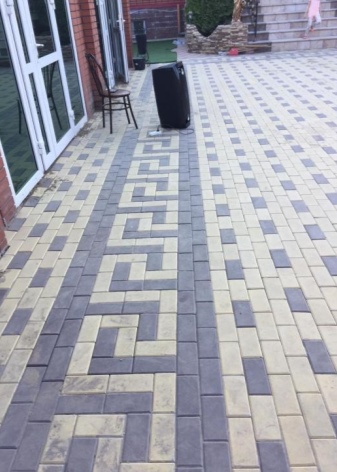
One of the most popular layouts is called chess. As a rule, yellow, brown, gray or black colors are used to decorate tracks according to this scheme. They alternate with each other, and the territory designed in this way looks like a large chessboard.
In order to make the yard look more original, you can combine with each other not only several colors, but also tiles with different textures.
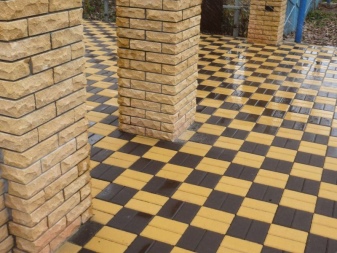
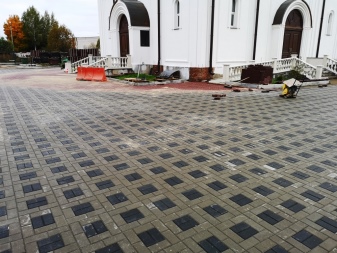
Radius patterns
Winding and radius sections are very convenient to design using a "brick". This material is great even for areas with intersections, elevation differences and narrow paths. So that there are no problems with their design, it is necessary to draw a sketch in advance on a scale, having thought over all the small details.
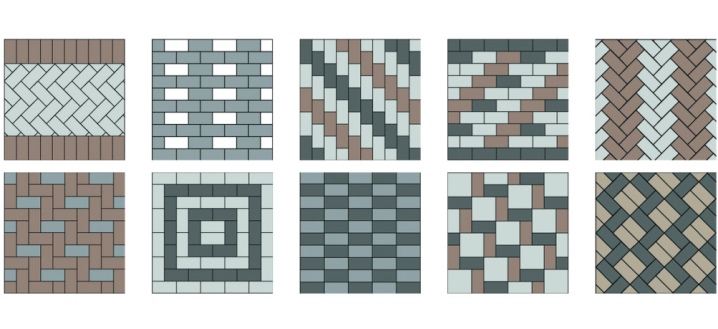
Making out the site with your own hands, before starting work, you also need to apply a contact layer. For this, a mixture of sand and cement is used in a ratio of 6: 1. After that, you can proceed directly to laying the tiles.... You need to move from the smaller details of the pattern to the larger elements. The last step is to compact the track. For this, all seams must be filled with cleaned quarry sand and carefully tamped.
Radius patterns are great for decorating a Roman courtyard, intersection, or patio.
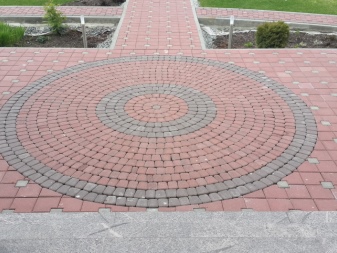

Installation nuances
When laying paving slabs, it is worth considering certain features of the work.
- Before purchasing material for work, you need to consider for what purposes it will be used. To decorate parking lots and parking spaces, tiles with a height of six to eight centimeters are used. Ordinary paths or seating areas can be arranged using 40-50 mm thick tiles.
- Getting started, you must thoroughly clean the entire area of debris, foliage and grass. It is also necessary to remove all roots and weeds that grow in the area where the paving is planned. After that, you can start marking.
- To prevent the drawing from "slipping", before starting work, you need to pre-install curbs along the edges of the path or any other territory. For them, in the process of marking, it is necessary to leave 5-10 centimeters on each side in advance.It is also very important to create a release layer to make the coating more durable. For this, it is recommended to use either geotextile or dornite.
- In any case, paving slabs must be laid on a compacted cushion. When decorating ordinary paths and terraces, it is enough to use ordinary sand. When arranging a parking space, the sand layer must be supplemented with gravel to make the installation more reliable.
- When planning the creation of some patterns or drawings, you need to buy additional elements in advance. Cubes of 10x10 and 8.8x8.8 centimeters in size are sold separately. You can buy them at any hardware store.
- For your own convenience, it is better to lay the tiles in front of you. In this case, the overall picture will be better visible. In addition, the paver itself will already move on the finished pavement. Paving should be started from the corner that is best viewed. If the territory is uneven, then you need to move from the lowest point on the entire site.
- Despite the fact that brick paving slabs are distinguished by their durability and strength, many experts advise to process them additionally before paving. There are many quality products that can increase the moisture resistance of concrete and make it more durable.
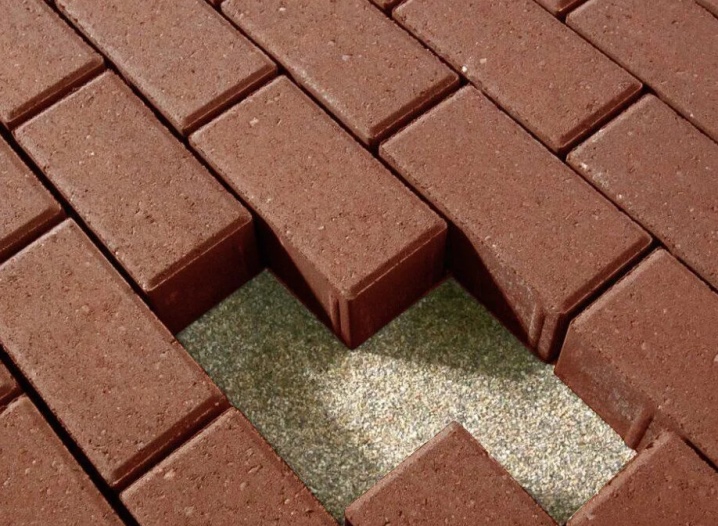
"Brick" is one of the popular classic types of paving slabs... Due to its simple form, pleasant appearance, it is perfect for decorating any areas. Therefore, it can be confidently chosen by both a person who is just starting to independently engage in the arrangement of a site, and a professional.
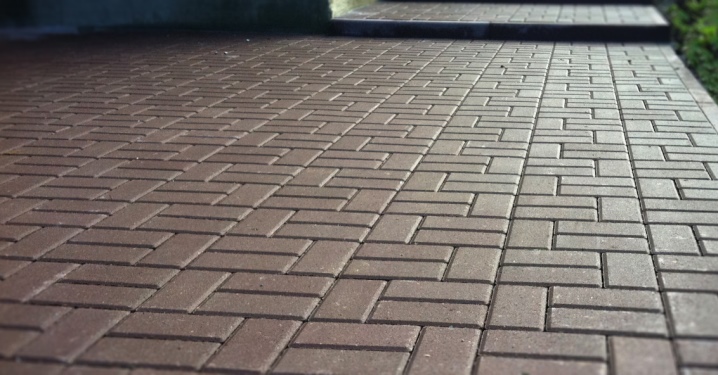













The comment was sent successfully.